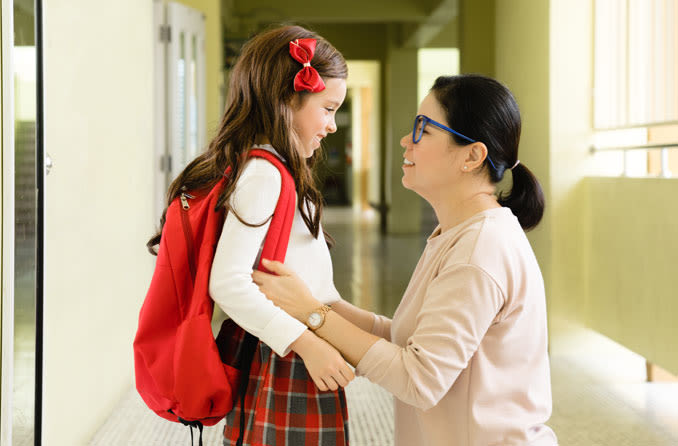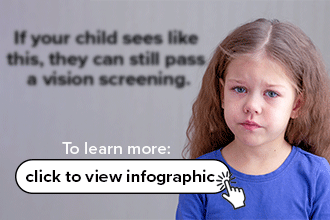Kids’ back-to-school eye exams, eyeglasses and savings

The importance of vision in education
As parents flock to back-to-school sales in the coming weeks, you may need to add eyeglasses to your child's school supplies list. While pencils and notebooks are helpful, your child’s vision is their most powerful learning tool.
Research suggests that one in four children in the U.S. has a vision impairment significant enough to affect their ability to learn. When you consider that 80% of a child’s learning is visual, it’s easy to see why clear eyesight is a top priority this school year.
The best way to know if your child needs glasses is to schedule a comprehensive eye exam for them before they head back to school this fall.
When to get an eye exam for your child
Children should have their first eye exam by their first birthday. This may seem young, but some eye problems can be present at birth. Eye doctors can detect these issues early and proactively correct them to get the best possible result.
If your child’s first eye exam reveals no issues, they should get their eyes examined again between ages 3 and 5, and then again before starting first grade (around age 6). After that, it is recommended that children get an eye exam annually until age 18.
Since back-to-school time comes around once a year, it’s an easy way to remember to schedule your child’s eye exam.
Signs your child may be having trouble seeing
Children who have trouble seeing rarely bring it up to their parents. This is often because they don’t realize that there’s a problem. Parents should keep an eye out for certain behaviors in their child that may indicate trouble with their eyesight.
Some of the most common signs of childhood vision issues include:
Frequent headaches
Short attention span
Avoiding or showing frustration with schoolwork
Frequent eye rubbing
Tilting their head to one side
Squinting
Holding objects close to their face or sitting close to the television when watching
Poor reading comprehension
Moving their head and/or using their finger to follow each line of text when reading
Clumsiness
Difficulty sitting still
Many states, but not all, require vision screenings for school-aged children. If you are unsure whether your child’s school offers vision screenings each year, ask a school administrator. It’s important to remember, however, that a school vision screening is not the same as a comprehensive eye exam.
During a pediatric eye exam, an eye doctor will check more than your child’s vision. They also assess things like your child’s eye health and how their eyes work together. So, don’t rely on your school’s vision screenings — think of them as supplementary. Book an eye exam every year for your child.
How to save on kids' glasses
If your child needs glasses, you can save money with back-to-school sales online or at an optical shop near you. Many brick-and-mortar and online retailers also offer buy one/get one specials and student discounts on eyeglasses throughout the year.
If you have vision insurance for your family through work, it may reduce the cost of your child's eye exam and eyeglasses. Similarly, a flexible spending account (FSA) or health savings account (HSA) can help cover the cost of your family's eyewear.
You should also check with your eye doctor for any promotions. Some practices offer children's eye exams at a discount around the back-to-school season, much like your family doctor may lower the price on sports physicals in late summer and fall.
READ MORE: Who has the best deals on kids’ prescription glasses?
Backpacks, pens and eyeglasses
If your child needs glasses, add them to your list of back-to-school must-haves and check various retailers for savings. Prioritize your child's health and education by making sure they can see clearly in the classroom and beyond.
READ NEXT: 10 tips for buying kids' eyewear
Keeping children’s vision in focus. American Optometric Association. August 2022.
How well can your child see? Ontario Association of Optometrists. Accessed April 2024.
When should your child have a first eye exam? Health Essentials. Cleveland Clinic. August 2019.
Comprehensive eye exams. American Optometric Association. Accessed April 2024.
Signs & symptoms of learning-related vision problems. College of Optometrists in Vision Development. Accessed April 2024.
Certain classroom behaviors may be related to poor vision. National Center for Children's Vision and Eye Health. Accessed April 2024.
Pediatric and school-age vision screening in the United States: Rationale, components, and future directions. Children (Basel). March 2023.
Page published on Friday, July 26, 2019
Page updated on Tuesday, April 30, 2024







